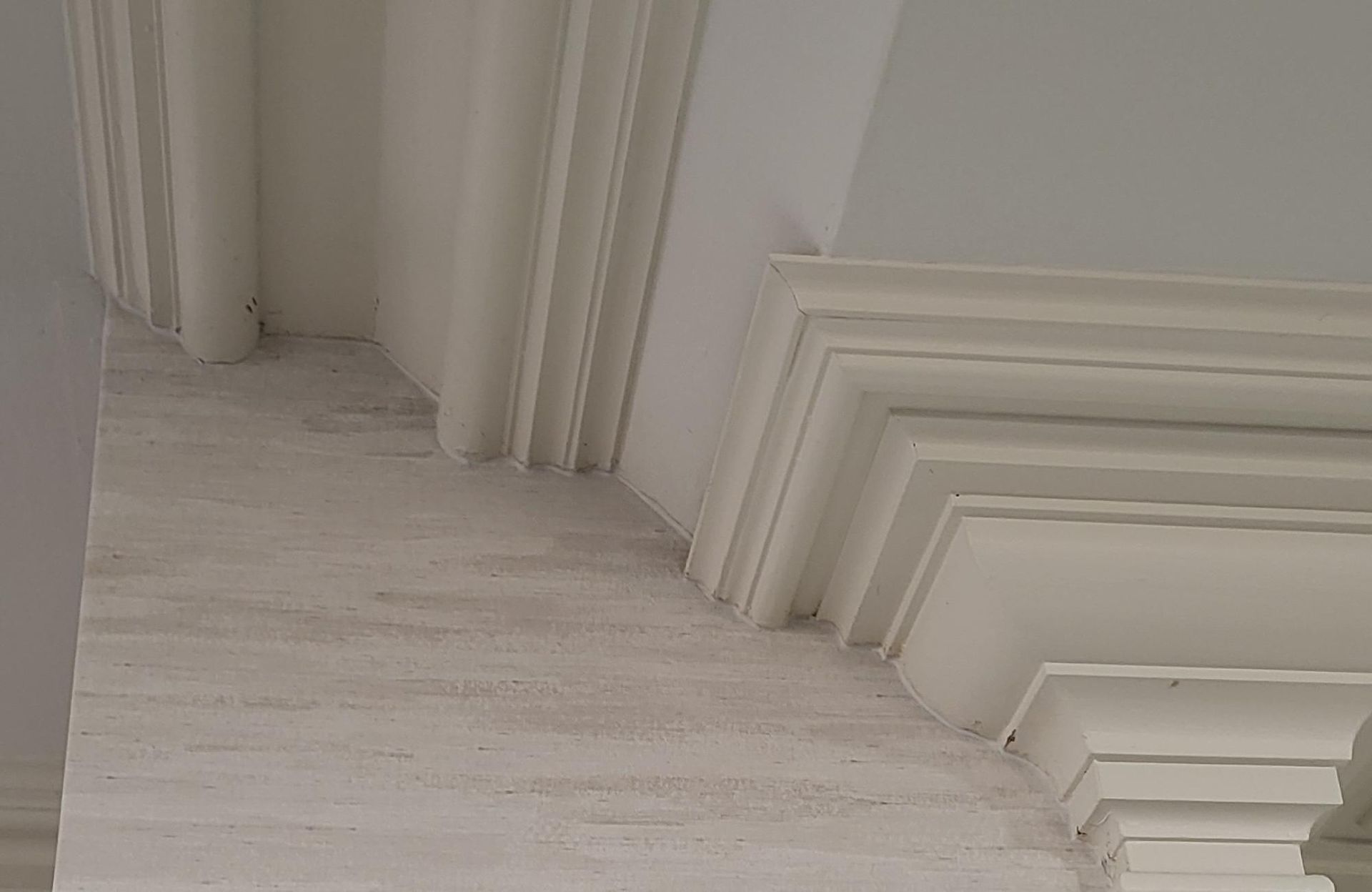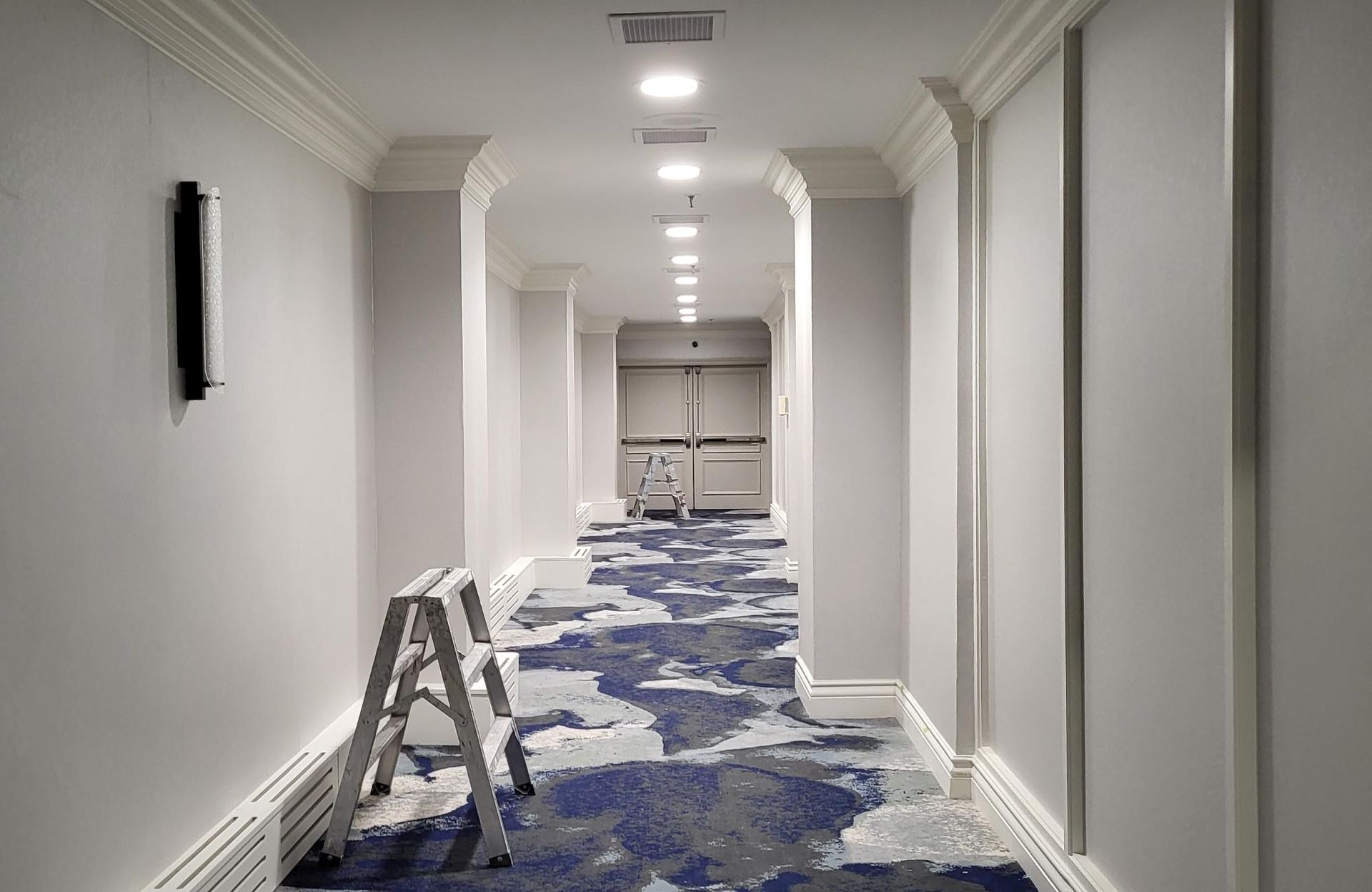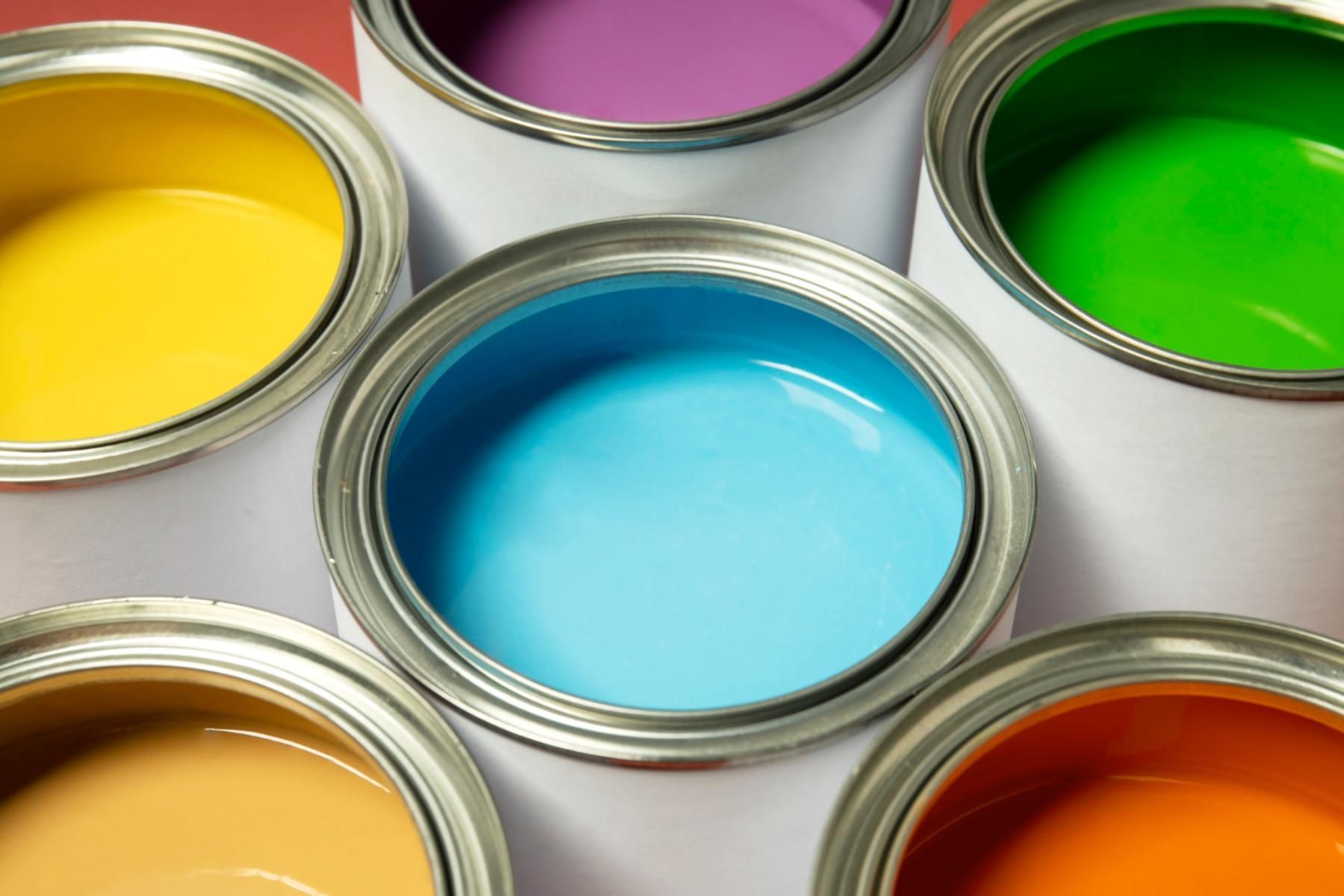The Hidden Costs of Ignoring 2025's Commercial Painting Trends

Colours have remarkable power in commercial spaces. They directly influence customer behavior, employee efficiency, and business success. The commercial painting landscape shows a fundamental change toward eco-conscious and wellness-focused color choices as we approach 2025. This makes a commercial painter's role more significant than ever.
Modern commercial painters adapt their techniques to include earthy tones, biophilic designs, and metallic accents. These choices represent more than decoration - they are strategic business decisions. My research for local commercial painters revealed an interesting trend. Businesses that ignore current painting trends risk more than their esthetic appeal. The consequences can be severe - from lower property values to missed business opportunities and reduced customer participation.
This piece explores what it all means when businesses neglect 2025's commercial painting trends. Your business's success depends on staying current with these changes.
Understanding Modern Commercial Paint Trends
The commercial painting industry faces major changes as we enter 2025. These changes are reshaping how businesses make their esthetic decisions. The paint and coatings market will reach CAD 249.97 billion by 2025, with a steady CAGR of 4.0%.
Current market expectations
Sterile whites and cool grays no longer dominate office spaces. Earth-inspired colors have become 2025's standout trend, especially those in the green family. Green environments reduce eye strain by 45% and lower stress levels by 30%. Creative thinking improves by 20% in these spaces.
The architectural segment leads growth in the paints and coatings market. Companies now understand that careful color selection affects employee productivity and customer behavior. Strategic color choices boost employee productivity by up to 15% and increase customer dwell time by 20%.
Impact on business perception
Commercial buildings' exterior appearance creates the first impression on potential customers. Professional commercial painters create environments that attract customers and encourage them to return. Market projections show the paint and coatings sector will reach CAD 114.10 billion by 2029, growing at 6.6% annually.
Colour alone influences 90% of quick decisions about products. Commercial paint colour selection affects purchasing intent and shapes customer perception of brand personality. The construction paints and coatings sector will grow from CAD 83.82 billion in 2024 to CAD 88.28 billion in 2025.
Warm neutrals lead the 2025 trends. These colors offer timeless elegance for professional settings and sophisticated alternatives to traditional white and gray. They provide better depth and dimension while maintaining brand consistency across locations. Professional commercial painting services extend paint life up to 7 years. They also reduce maintenance costs and improve brand perception.
Eco-friendly and wellness-focused color choices continue to grow popular. The industry adapts to these changing priorities through technological advancements and increased research for performance improvements.
Financial Impact on Business Operations
Your business operations take a big hit when you ignore commercial painting trends. Studies show that outdated or poorly managed commercial spaces directly affect your financial performance.
Decreased customer engagement
First impressions shape how customers behave. Businesses that keep their exteriors in good shape see more repeat customers. A professional paint job draws more people and makes them stay longer. Retail spaces with modern paint schemes have seen their sales jump by 20%.
Lower employee productivity
Your workspace environment shapes how well your employees perform. A newer study, published by the University of Texas found that dull gray, beige, and white offices make people feel sad and depressed, especially women. Men's mood and productivity drop in purple and orange spaces. Blue and green spaces, on the other hand, help people work better. Employees feel less stressed and like their jobs more in these colors.
Maintenance cost escalation
Your costs will climb if you put off regular painting maintenance. Commercial painters charge between CAD 83.60 to CAD 139.34 per hour. Delayed maintenance often means bigger repairs. Simple painting supplies cost CAD 69.67 to CAD 209.00, while support equipment might add CAD 696.68 to CAD 2090.04+ per day.
Paint quality makes a big difference in long-term costs. Premium paints cost CAD 69.67 to CAD 104.50 per gallon but give better protection and last longer. Regular maintenance prevents expensive structural damage, cuts down major repaints, and makes buildings more energy-efficient through better sealing.
Working with experienced commercial painters is a vital part of protecting your property value and keeping operations smooth. Professional crews can work after hours or on weekends to minimize disruption. This smart approach to maintenance keeps your building looking good and saves money through preventive care.
Market Position and Competition
Physical appearance significantly shapes how customers view businesses and impacts their success. Studies show that paint choices inside and outside a building directly affect customer trust, loyalty, and buying decisions.
Brand image deterioration
A building's look works as a powerful marketing tool that communicates brand values to potential customers. Research shows that clean, vibrant, and properly managed properties signal professionalism and care for detail. Faded colors and chipped paint make customers think of neglect.
Commercial painters know that using consistent color schemes helps strengthen brand recognition. Businesses that don't take care of their physical spaces risk damaging their brand's visual identity. Research proves that customers quickly judge product quality based on how a facility looks, and well-kept exteriors bring in more visitors.
Lost business opportunities
The commercial painting sector keeps growing, but many businesses still look outdated. The global antimicrobial coatings market reached USD 11.39 billion in 2023 and should grow by 13.9% from 2024 to 2030. These numbers show rising demand for specialized paint solutions that improve both looks and function.
Professional commercial painters now provide state-of-the-art solutions like self-healing paints and VOC-free compounds. These new products last longer and make indoor air cleaner. Businesses that don't use these technologies risk falling behind their competitors who welcome such improvements.
Construction and real estate sectors continue to grow steadily, giving businesses chances to stand out. Companies with old paint schemes often see fewer customers and lose revenue. Local commercial painters report that businesses who invest in regular upkeep and modern paint solutions get happier customers and more referrals.
The painting industry expects more advances in materials and techniques. Smart businesses that work with experienced commercial spray painters put themselves in a great position. They can make use of these improvements and keep their spaces welcoming and competitive as markets change.
Property Value Implications
Paint choices do more than just make a property look good - they affect its value and shape long-term financial plans. Market analysis shows clear links between color choices and property worth.
Depreciation factors
Paint inside buildings loses 8.33% of its value each year. Smart color choices are vital to keep property values stable. Zillow's research shows how colors can affect a property's worth by a lot. Their data reveals that blue-gray kitchens sold for CAD 2,508.05 more than other colors. Light blue bathrooms brought in CAD 7,579.88 above expected prices.
Location plays a key role in how fast paint wears down. Local commercial painters highlight how the environment affects paint life. Paint deteriorates faster in areas with high pollution, humidity, or harsh weather. Premium materials make sense in these spots, even though they cost more upfront.
Future renovation expenses
Property experts predict higher material costs in 2025, with 70% expecting price increases. A typical mid-sized commercial paint job covering 10,000 square feet costs between CAD 27,867.20 and CAD 83,601.61. These prices include labor, materials, and other needs.
Commercial painters know that delayed maintenance leads to bigger repair bills later. Paint lasts longer when surfaces are prepared well, with proper primer and technique. White spaces, once seen as a safe choice, now might suggest poor maintenance and bring lower offers.
Construction faces big challenges today. Land costs hit record highs, banks restrict lending, and city approvals take longer. Smart businesses team up with experienced painters to create detailed maintenance plans. This helps properties keep their value despite tough market conditions.
FAQs
Q1. How do commercial painting trends impact business success? Commercial painting trends significantly influence customer behavior, employee productivity, and overall business success. Strategic color choices can increase sales by up to 20%, improve employee productivity by 15%, and enhance customer engagement.
Q2. What are the financial consequences of ignoring current painting trends? Ignoring current painting trends can lead to decreased customer engagement, lower employee productivity, and increased maintenance costs. It may also result in brand image deterioration and lost business opportunities, ultimately affecting the company's bottom line.
Q3. How does paint quality affect long-term costs for businesses? While premium paints may have higher upfront costs, they offer superior protection and durability. Using high-quality paint can prevent expensive structural damage, reduce the frequency of major repaints, and improve energy efficiency through proper sealing, leading to long-term cost savings.
Q4. Can paint colors impact property value? Yes, paint colors can significantly impact property value. For example, blue-gray kitchens have been shown to command higher sales prices, while light blue bathrooms can fetch above-expected values. Conversely, outdated or poorly maintained paint can lead to property depreciation.
Q5. Why is it important to stay updated with commercial painting trends? Staying updated with commercial painting trends is crucial because it helps businesses maintain a competitive edge, attract customers, and create a positive work environment. It also ensures that the property maintains its value and avoids costly repairs or renovations in the future.
Wrapping It Up
Colour trends in commercial painting do more than just make buildings look good. Smart color choices can change customer behavior, improve employee output, and boost property values. Businesses that follow modern paint trends see their sales grow by up to 20% and get better customer participation.
Paint selections work as quiet brand representatives that showcase business values and precision. Quality paints and professional work need money upfront but prevent repairs from getting pricey later. Studies reveal that smart color picks can add thousands to property value, especially shades like blue-gray that give real returns.
Market research shows eco-friendly, wellness-focused paint choices are becoming the norm. Companies that ignore these changes risk falling behind rivals who know how colors affect customer choices. Professional painters now provide innovative solutions beyond basic painting to help businesses compete effectively.
Timing matters most in commercial painting projects. Delays often result in costly fixes, lower property values, and missed business chances. Smart owners team up with seasoned painters and create detailed maintenance plans to protect their investment while keeping up with trends. You should connect with a professional commercial painter to make your business space trendy and competitive.
Need help?
Let Revive Painting and Wall Coverings help! Our painters know your business and operations - let us enhance it today. Contact us to learn more.



